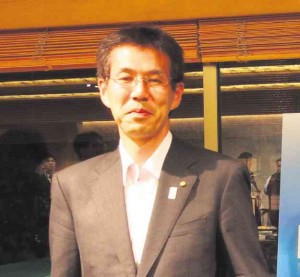Engineers address hybrids’ environmental impact
First in a series
As of March this year, over 5 million Toyota hybrid vehicles have been sold worldwide since they were first introduced 16 years ago. The automotive giant estimates that its global fleet of nearly 20 hybrid brands (including one plug-in “hybrid”) has resulted in approximately 34 million fewer tons of carbon dioxide emissions than those produced by their full fossil fuel-powered counterparts.
The company also estimates its hybrids have saved their owners more than 3 billion gallons of gasoline, compared to gasoline-only-powered vehicles.
Too good to be true
It’s not all a bed of roses for hybrid cars, though. There are thorny issues to be addressed, particularly for an automaker introducing a new way of motoring. The technology purportedly aimed to reduce motor vehicles’ impact on the environment can’t help but stir up some contentious points. Hybrids seem too good to be true, and sooner or later the weaknesses in the system would reveal themselves, some critics warn.
Those ever suspicious of the hybrids often aim their criticisms either at the production phase of Toyota’s flagship hybrid vehicle Prius (via the “Prius vs Hummer environmental cost of production” propagated by an automotive consulting company a few years ago, and which was eventually debunked), or its powerpack nickel metal hydride, particularly the sourcing and disposal of the battery.
Wanting to give journalists from across the Asian region a clearer picture of what happens inside the very heart of the hybrid vehicle production facilities and hopefully find the truth behind hybrids, the Toyota Motors headquarters in Japan invited 40 motoring scribes from India, Indonesia, Malaysia and Pakistan, including four from the Philippines to the “Toyota Hybrid Experience” in Nagoya.
For four days, Japanese engineers, hybrid battery experts and corporate executives guided the journalists, including this writer, through the inner workings of both the vehicles and production facilities. At the same time, the motoring press was able to drive the latest Prius plug-in hybrids, including the Estima, the Lexus RX 450h and CT200h, the Alphard hybrid, Aqua Hybrid (Prius C) and the Prius CX.
Recycled and reused

TOYOTA estimates that its global fleet of nearly 20 hybrid brands has resulted in approximately 34 million fewer tons of CO2 emissions than those produced by their full fossil fuel-powered counterparts. Photos by Tessa R. Salazar
Toyota chief engineer Kouji Toyoshima wasted no time explaining to Inquirer Motoring that the nickel metal hydride batteries used for their hybrids are recycled and reused. These batteries are recovered worldwide so these can be fully utilized again.
Toyoshima stressed that Toyota, particularly in Japan, has been taking the initiative to achieve full reuse and recycling of all batteries. The system of recycling/reusing batteries has also been present in the United States.
“Based on this recovery scheme, the nickel metal hydride batteries used on the Prius or other hybrid vehicles are set for reuse. We can already recover and put into reuse 100 percent of all batteries used on those hybrid vehicles,” he said.
Toyoshima added that the reused hybrid vehicle batteries can also be utilized as stationary residential storage batteries.
“Furthermore, starting this year, we have embarked upon a new development system under which whenever there is any trouble with the batteries, and when those batteries are recovered, only the defective or problematic part of that battery is replaced so that the repaired batteries can be put into new use or reuse,” he said.
Another engineer, managing officer for the product planning group Satoshi Ogiso, revealed that their hybrids’ projected CO2 emissions have all been figured out.
“Our data shows that the total carbon dioxide production of hybrid vehicles is roughly more than 35 percent smaller than the CO2 production of conventional cars, and that after 100,000 kilometers on the odometer, the total carbon footprint is up to 35 percent smaller than conventional cars,” he said.
Ogiso added that nickel (a component of hybrid batteries) is a fully recyclable material, and that the technology to improve the hybrids’ battery system is being developed.
“Toyota is now developing the next-generation battery system for the next-generation hybrid, but 10 years from now, nickel metal hydride and lithium ion will be the technology in use for mass production of batteries,” he said.
Cheaper lithium ion
Ogiso added that lithium ion has been seen as one of several alternatives to to nickel metal hydride batteries. Though at present, lithium ion is too expensive, Toyota, he disclosed, is bent on developing a cheaper lithium ion battery.
For nickel metal hydride batteries, Toyota already has presented an established system for recovery and reuse. Toyoshima explained that the auto giant had to make the system commercially feasible.
Based on the Toyota experience, Toyoshima stressed that the retrieval and recycling systems have become viable businesses. The greater volume of hybrids now in use enables the recovery and reuse of nickel as a business.
Toyoshima told Inquirer Motoring that unlike nickel that is mined from the mountains, lithium ion is sourced from seawater and other sources.
Toyoshima added that “lithium is difficult to recover and put to reuse, and Li-ion battery tends to degrade rapidly, therefore making it more difficult to recover and reuse.”
“That’s one of the reasons Toyota has not yet made a wholesale transition from nickel metal hydride to lithium ion,” he said.
Toyoshima said that the technology to recycle nickel metal hydride battery is well-established.
(To be continued)


